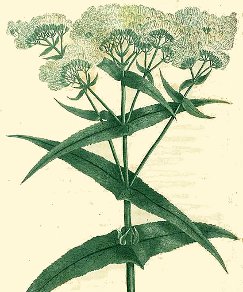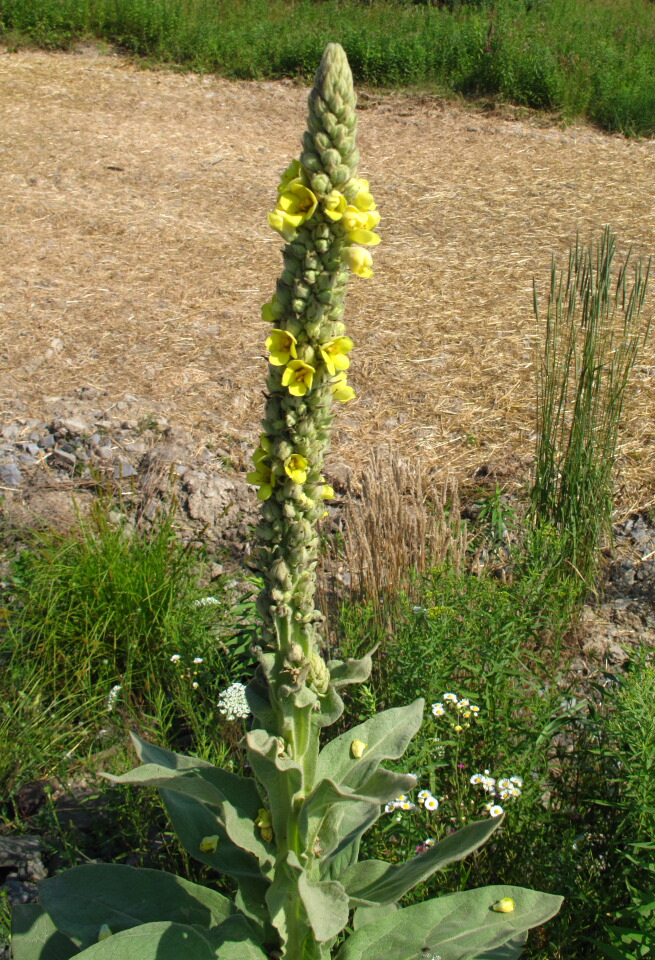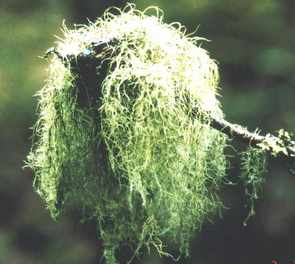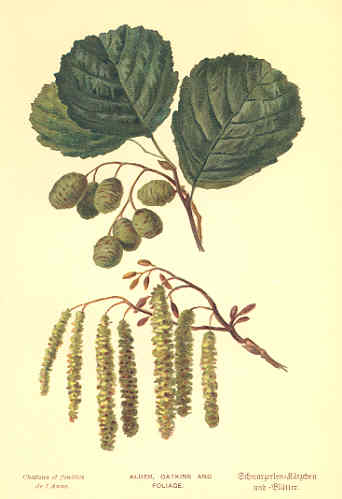It’s almost time for the first class in my upcoming herbal series here in beautiful Rupert( can’t quite say ‘downtown’) and I am so excited! As indicated in the last entry, I have a lot of ground to cover and many ideas and recipes to share in just two hours. I’ve made, or are making, a number of treats to sample, and a few special blends to take home – hope to see a bunch of locals there! And speaking of locals, although it’s past the season where we can go out looking for plants, many of the herbs we’ll be covering in class do grow closeby – and a number of medicinally important trees, too. (January’s class is Tree Medicine, wherein we explore the medicine and magic of many local species). For the first class, on Cold and Flu prevention and care, let’s have a sneak peek at some of the Local Heroes who will be finding their way into our teas, syrups, chest rubs and more. Have you seen any of these plants growing nearby?
1) Boneset (Eupatorium perfoliatum)

This marvelous plant is everywhere in my area! I consider it one of THE best remedies to start with, that very first day of cold/flu, when you’re just starting to feel the achiness and fatigue. Often found growing in damp spots, ear water, the leaf pattern is distinctive – see above – we’ll be looking at them in the wild next summer, for sure. I use in tincture, mainly, for it’s many actions; Boneset helps relieve aches and pains, has some immunostimulant action, can stimulate a fever if need be ( in hot tea, but it’s difficult to drink so I tend to use elderberry and yarrow instead). Boneset is underused, in the general populace, but it’s an extremely helpful and safe herb, in moderate doses. Well worth getting acquainted with.
2) Yarrow (Achillea millefolium)

Everyone knows Yarrow, but I suspect most people think first of it’s ability to stop bleeding (internally as well as on the skin)… yarrow is a time- honoured and effective cold and flu treatment as well. Served hot in tea with (or without) elderflower, yarrow helps support the body through fever, stimulating diaphoresis (allowing the body to sweat through dilation of peripheral blood vessels) and fighting inflammation. Abundant locally, yarrow offers a range of other actions you’ll learn about from the classnotes. For now, is this a familiar local face? I’m pretty sure the answer is yes.
3) Elderberry and flower(Sambucus canadensis)

Oregon Herbalist Rosalee de la Foret states that if she only had one herb to use with a cold or flu, it would be Elder; I heartily agree. Elder has been called a “medicine chest” all in one plant. Both the flower and berry are incredibly helpful throughout these types of illness, offering diaphoretic support, anti-viral actions and gentle immune support. We’ll look at multiple ways to prepare and take elder – in tea, syrups, tinctures and more exotic methods, too (oxymel, elixir). You’ll fall in love – if you’re not already aware of Elder’s amazing medicinal properties.
3) Pine species (Pimus resinosa, strobus, banksiana, nigra and sylvestris) plus a number of other conifers.

I spend a chunk of every winter seeking and collecting resin, as well as making yummy and nourishing things like Pine cake and various teas with fresh needles. In the class, you’ll learn how to make a warming, healing chest rub with our local pine species – needle and resin – and yes, I am baking the cake as well. Real forest medicine. ❤
4 ) Mullein (Verbascum thapsus)

Another very familiar plant, many people know about infusing mullein flowers into olive oil for ear infections. But there’s so much more to this herb than ears! A classic respiratory herb, Mullein is expectorant, anti-inflammatory, demulcent (soothing!) and vulnerary (helps heal tissue, such as the raw bronchial passages we all get when we’re sick). Especially with a dry, hacking cough, mullein is an incredibly useful herb with colds and flu (and other conditions – wait for the class handouts). 🙂
5) Elecampane (Inula helenium)

Another of my very favorite herbs, I have looked in vain for this one growing locally – I know there has to be some! Elecampane goes into every cold and flu preparation I make, specifically when there is a productive cough, catarrh in the lungs. Expectorant, antimicrobial, anti-tussive, all round amazing. Until I find some, La Foret always has some in stock. 🙂
6) Mallow species (Athea officinalis, Malva neglecta and sylvestris)

This gentle little plant and her showier cousin Althea officinalis are wonderfully soothing for rough, raw, painful throat and lungs. I make cold infusion of the dried roots, and love to simmer the roots in honey, too, for the kind of supportive, healing help that herbs can bring. Mallows are also anti-inflammatory – they don’t just coat the surface, they cool down the heat.
Indispensable.
7) Wild cherry (Prunus serotina)

Another one that many will recognize as a standard ingredient in cough syrups; Black or wild black cherry is a fantastic remedy for easing the misery of irritating cough, the kind that just won’t let you sleep. The dried bark is used in syrup or tincture to help give relief, in combination with other relaxing or sedating nervines that allow badly needed rest throughout illness. Both serotina and her cousin Chokecherry, Prunus virginia, are easily located locally.
8) Usnea (Usnea barbata)

Usnea, (or more correctly Usneas, because there are literally hundreds of species) is everywhere, a beautiful lichen found growing on many of our local trees. Usnea is a powerful antimicrobial herb, with actions that fight both some types of bacteria and many viral infections as well. Another staple to use with chest colds and flu, and not as wellknown as it should be. We’ll be talking much more deeply about all these herbs, this is just a mini- taste of what’s to come.
We’ll also be looking at
Echinacea
Cinnamon
Ginger
Hyssop
Thyme
Horehound
Garlic
Osha
Monarda
Licorice
Elm spp.
Horehound
Astragalus
Reishi and other mushrooms
Honeysuckle
Sage
Alder spp.
Cedar
How to select, prepare and dose for optimal support, and faster recovery time. I’m not sure how we will cover it all in two hours, but I aim to try.
For any more information on the class, please give me a call, 819-459-1049, or drop an email at catlane@thepossiblecanine.com. I’ll be delighted to help.













